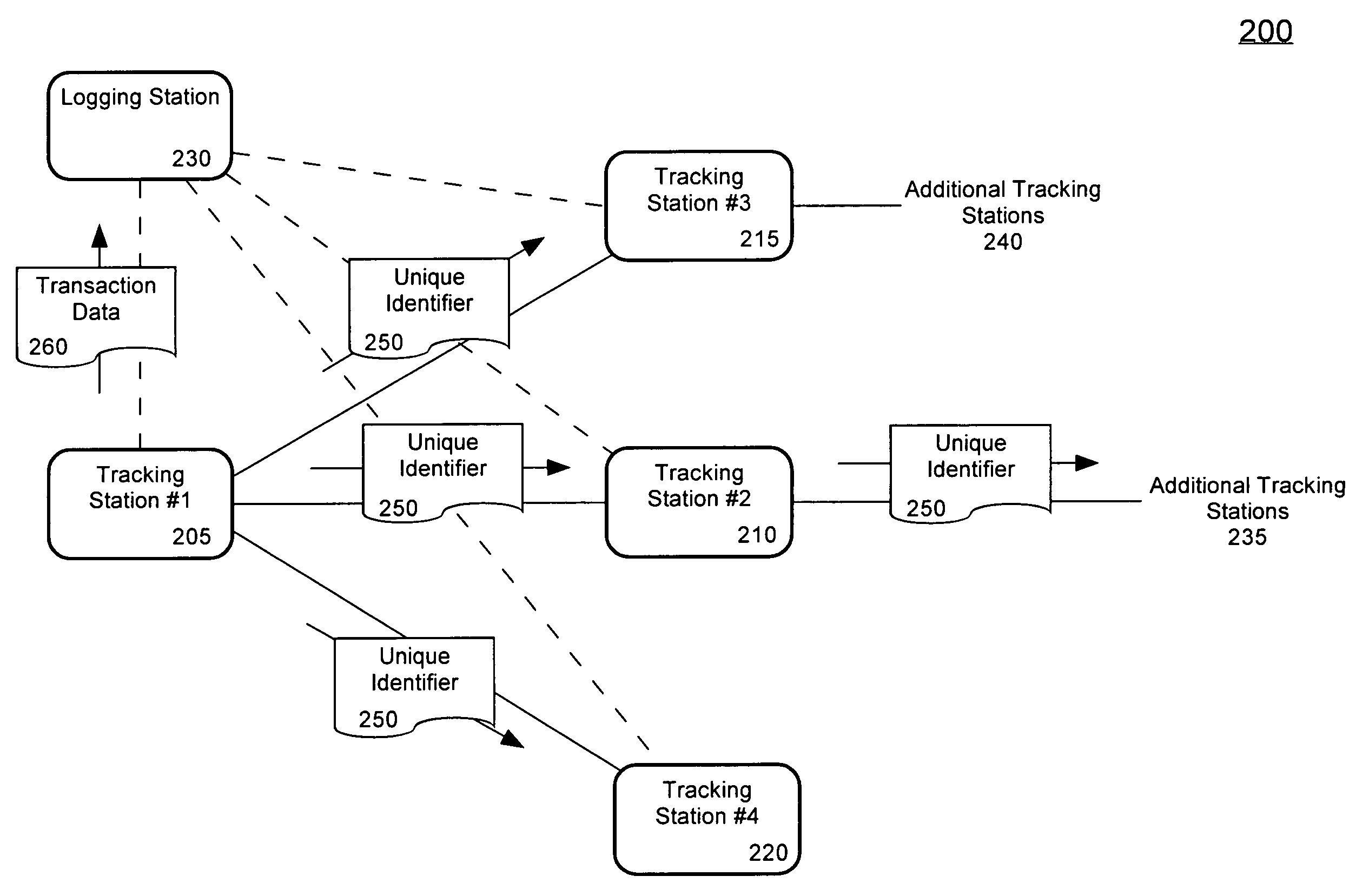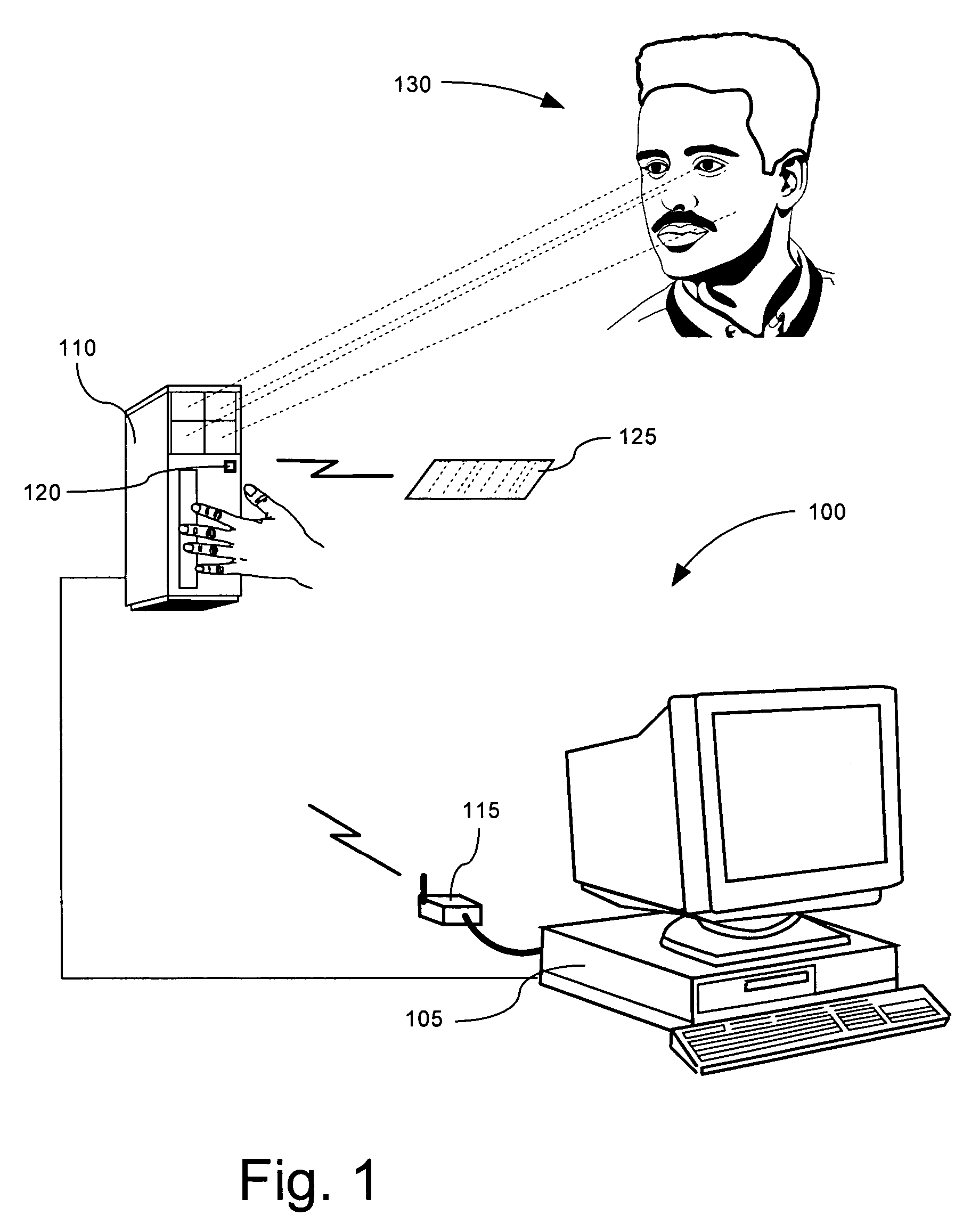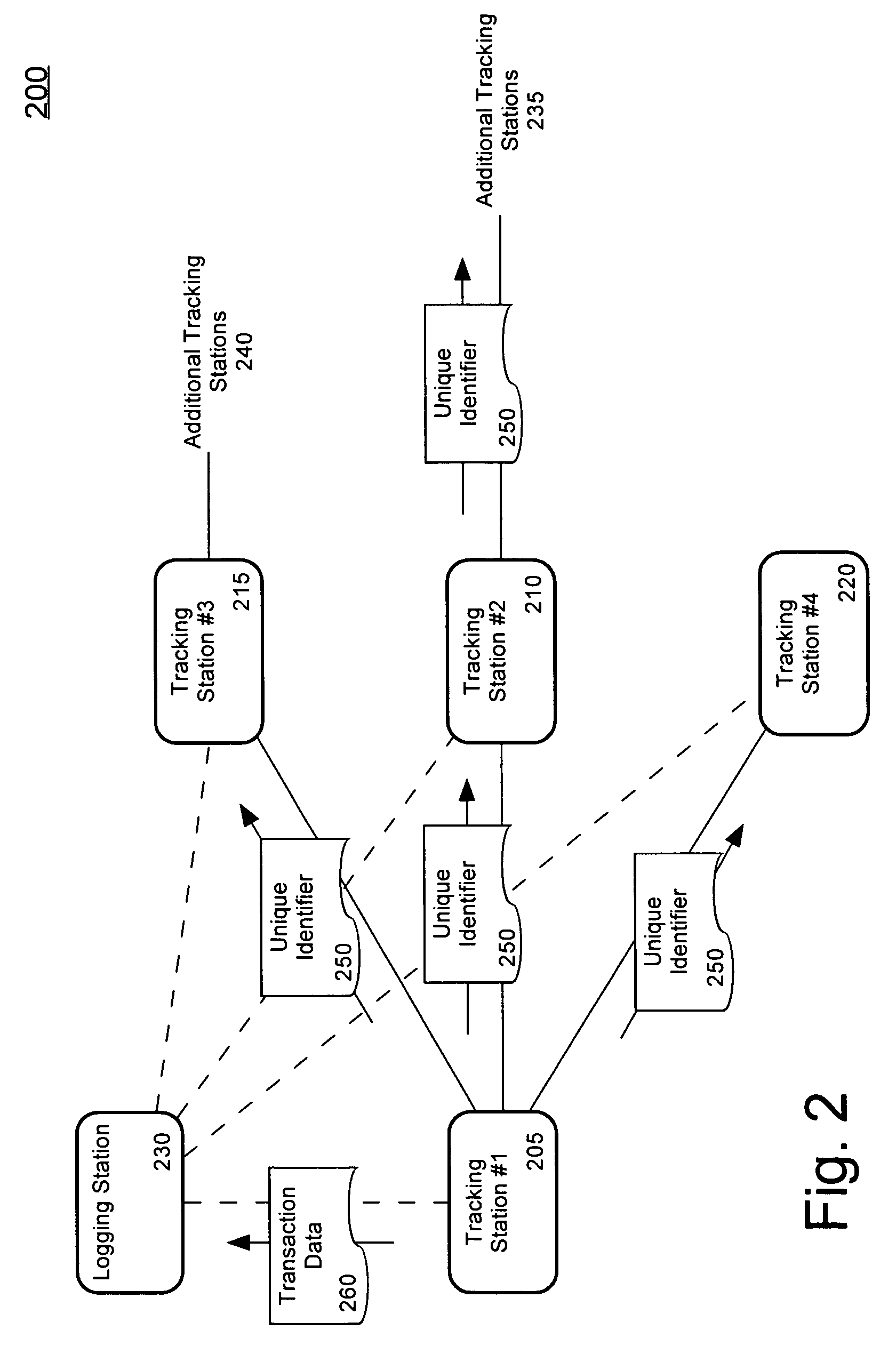Wireless ad-hoc RFID tracking system
a tracking system and wireless technology, applied in the field of tracking methods and apparatuses, can solve the problems of high implementation, maintenance and operation costs of many of these systems, and the range at which passive rfid tags can be scanned is much smaller than the scanning range of active rfid tags, and the use of technology costs prohibitive in many venues
- Summary
- Abstract
- Description
- Claims
- Application Information
AI Technical Summary
Benefits of technology
Problems solved by technology
Method used
Image
Examples
Embodiment Construction
[0020]An embodiment in accordance with the present invention relates to a method of tracking an entity, such as a person or object, through a plurality of tracking stations which are operated in a wireless ad-hoc network. The tracking system can be deployed at a commercial travel center, such as an airport or bus station. Nonetheless, the tracking system also can be deployed at a stadium, mall, industrial complex, school, building, ship, or any other area that requires enhanced security. The tracking system can include a plurality of compact tracking stations wirelessly networked and deployed among the security zones. The tracking system can be deployed such that a person is required to be authenticated at a tracking station each time the person traverses between security zones. Further, the movement of objects belonging to a person, for instance luggage, also can be tracked. Accordingly, the movement of a person and objects associated with the person can be monitored as the person ...
PUM
 Login to View More
Login to View More Abstract
Description
Claims
Application Information
 Login to View More
Login to View More - R&D
- Intellectual Property
- Life Sciences
- Materials
- Tech Scout
- Unparalleled Data Quality
- Higher Quality Content
- 60% Fewer Hallucinations
Browse by: Latest US Patents, China's latest patents, Technical Efficacy Thesaurus, Application Domain, Technology Topic, Popular Technical Reports.
© 2025 PatSnap. All rights reserved.Legal|Privacy policy|Modern Slavery Act Transparency Statement|Sitemap|About US| Contact US: help@patsnap.com



